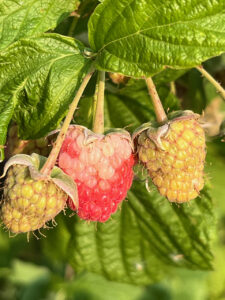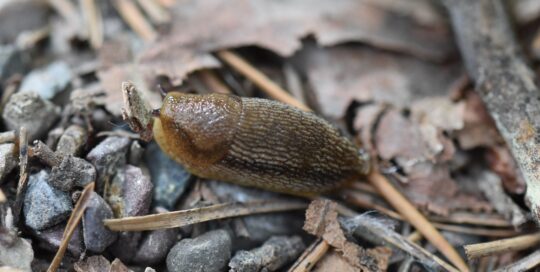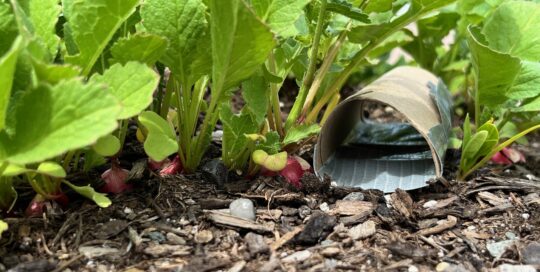Sunburned Fruit: What It Looks Like and How to Prevent It
Views: 1515

It is one of those cool summer mornings where the raspberries back and you to pick. It’s also a good time because there are fewer wasps and yellow jackets on the fruit. But as I filled my bowl I noticed white blotches on a lot of the ripening berries that are facing south. It hit me that they are sunburned. Today I want to talk about how and why you might have sunburned fruit, as well as what you can do about it.
After a brief interlude where it felt like the hottest part of the summer was behind us, we were hit with extreme temperatures. Yesterday was 100° and tomorrow is supposed to be even hotter. This level of heat, combined with direct sunlight and extremely low humidity is a recipe for sunburned fruit.
What Does Sunburned Fruit Look Like?
Sometimes it’s difficult to tell whether fruit is sunburned, or whether there is a disease issue. With raspberries it is obvious because of the whitening and hardening on one side of the berry. The damaged section is hard, and does not taste very good, but it is safe to eat. Some people still pick them and use them, but they are simply not as pretty.
Why Not Add Fruit Plants to Your Garden
Grapes are also prone to sunburning. Like the raspberries, it starts out as a blotchy part of the grape, which might be white, yellow or brown. This eventually hardens and the entire grape dries and shrivels. If it’s just a couple of grapes here and there, it really isn’t much of a problem. These can be used in wine and jelly making without affecting the entire batch. But if there are solid clusters or large numbers, toss them.
Apples are another fruit that are susceptible to burning, especially for those facing the southwest causing them to turn brown. According to Washington State University (WSU) apples will exhibit a burn after approximately an hour exposed to temperatures between 114 to 120°F.
WSU also explained, “Under calm wind conditions, fruit surfaces can be up to 30°F hotter than the surrounding air.” This isn’t something that we often consider. If it is 90° with no wind, it is very possible, and likely, that the fruit will reach this temperature. And if it becomes hotter than 125°F, tissues begin to die, and the fruit suffers what is called sunburn necrosis. In this case, visible rotting occurs on the sunburned fruit.
Protect Your Fruit from the Sun
Thankfully, there are several techniques that are used to reduce the impact of the intense sun. The easiest remedy is to run overhead irrigation. While we often think that watering during the day is taboo in certain parts of the country, the reality is the evaporative affect cools the fruit enough to prevent burning. If possible, turn on the sprinklers for 20 to 30 minutes at a time throughout the day.
For many operations, including home gardens, using overhead orchard netting is a terrific way to cut down on the direct solar rays. This is a little bit more labor intense, as it requires a structure to be able to support the fine meshed fabric above the plants, but it is very effective. This works especially well for berries because they are shorter and easier to handle, but there are operations that have them over their apple trees, as well.
A third option for apples, not berries, is using a protective spray of some sort. Kaolin clay is one product that is also useful for pest control, plus keeps the fruit from sunburning. Products with calcium carbonate share similar qualities. Of course, both of these need to be cleaned from the fruit before it is used.
Just as we protect our gardens from inclement weather and frost, sometimes it’s important to be wary of the sun. If you find some damage on your plants, consider using any of these techniques to be able to harvest beautiful fruit without the burn.
Meet Amy Grisak
Amy is a freelance author and photographer in Great Falls, MT who specializes in gardening, foods, and sustainable agriculture. She provides information on every kind…
Amy's Recent Posts

Staying on Top of Slugs








